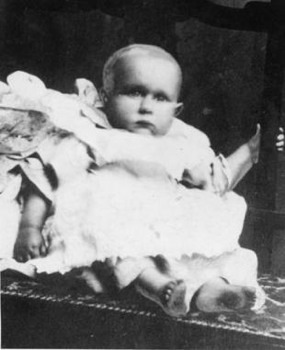10 newly discovered scientific mysteries (Part 3)
Using computers to solve 500 billion moves could happen in chess, identifying the anonymous child on the Titanic . the newly discovered mysteries.
>> 10 newly discovered scientific mysteries (Part 1)
>> 10 newly discovered scientific mysteries (Part 2)
Secret 6: The unnamed child on the Titanic

Today's DNA analysis technique helps identify exactly who the anonymous baby is on the Titanic.
Several days after the sinking of the Titanic, the body of a child in the North Atlantic was recovered. Unable to identify the child, it was buried in Nova Scotia, a stone stele was placed on the grave, with the simple words 'An anonymous baby'.
In 2001, researchers at Lakeland University in Ontario were allowed to unearth this corpse to find out who the baby was. By carefully studying the list of passengers present on the shipwreck, they snatched that child who could be one of four children with the following names: Gosta Paulson, Eino Panula, Eugene Rice and Sidney Goodwin.
Early tests showed that the body was of Eino Panula. However, in 2007 they discovered that they were mistaken. Further examination by analyzing DNA of the body of the corpse and comparing it to the DNA of one of Godwin's surviving relatives, and this time it is not wrong. The 'anonymous baby' was identified as Sidnet Goodwin and was the youngest of six children of Tred and August couple in Fulham, England and emigrated to New York. But at that time people could not find corpses nor all of Sidney's brothers and sisters.
Notable event: The child was picked up by sailors and buried on May 4, 1912. They made a bronze pendant, engraved with the word "Our Angel", placed in a coffin.
Secret 7: Solving the problem of a Checker

Checkers were completely solved.
Checkers have been around for 400 years and enchanted millions. Since 1989 people have used computers to solve the possible 500 billion moves. In 1992, the computer was defeated by world champion Marion Tinsley and he was recognized as an unprecedented player of the planet.
Finally, in 2007, Alberta University researchers wrote a computer program, called Chinook, that could play checkers perfectly. At the height of the Chinook project, 200 computers were used simultaneously to record each move possible on the checkerboard, and to determine the exact move of the player. If no player makes mistakes, the match will end.
Noteworthy event: Checkers is the most popular game that has been fully solved today, with the number of moves that can be 5x1020. The number of calculations performed is 1014 and the calculation time is 18 years.
Secret 8: Ancient terracotta has been decoded

This is the "notebook" about the position of the astronomers of Summerian astronomers, in 3123 BC.
The circular burnt clay on the image found 150 years ago at Nineveh, the capital of ancient Assyria, is now Iraq. This terracotta sheet contains constellations and hieroglyphs, cuneiform type of Summerian people, belonging to the oldest civilization in the world.
How many decades have passed, scientists have not yet deciphered the drawings and writing on that terracotta plate. In 2008, two scientists Alan Bond and Mark Hempsell from Bristol University cracked the ciphers of cuneiform. By using computer programs, they rebuilt the night sky thousands of years ago. The two scientists were able to 'read' the 'notebook' of the astronomers of Summerian astronomers, regarding the phenomena in the sky before dawn on June 29, 3123 BC .
Noteworthy event: The terracotta plate showed that a large object passed that day through the constellation Pisces. The main symbols are the trajectory of the collision with Austria's Koffels region, causing slippage. From the information collected on this terracotta sheet, it can be explained why there are no cracks due to collisions with meteorites (because the ground angle is very small and when it falls, it bumps into a mountain called Gamskogel and explode before reaching the ground).
(Continue)
- 10 newly discovered scientific mysteries (Part 2)
- 10 newly discovered scientific mysteries (Part 1)
- 10 newly discovered scientific mysteries (Last part)
- Amazing mysteries in nature
- Sao la enters the Top 10 newly discovered mammal species
- The 'creepy' mysteries make science 'crazy' when decoding
- New scientific mysteries are answered
- Prehistoric nuclear reactors
- The mystery continues to challenge humanity 2012
- Solve the 9 biggest mysteries of science in the 21st century
- Gamers decipher scientific mysteries
- 10 newly discovered animals
 The truth about the mysterious red-haired giant at Lovelock Cave
The truth about the mysterious red-haired giant at Lovelock Cave Inunaki Tunnel: The haunted road leading into Japan's 'village of death'
Inunaki Tunnel: The haunted road leading into Japan's 'village of death' The mystery of the phenomenon of human reflection before dying
The mystery of the phenomenon of human reflection before dying 6 mysterious phenomena, although science has been developed for a long time, still cannot be answered
6 mysterious phenomena, although science has been developed for a long time, still cannot be answered